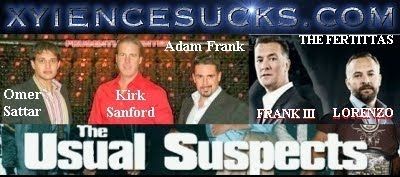Well, it’s not “day labor” but Axiom Law has created a profitable niche by provided lawyers to law firms and corporations for temporary assigments on matters. According to a recent Forbes article, we’re not talking about run of the mill…
Posts Tagged ‘model’
How Much is Legal Advice Worth?
One of the winners of TechCrunch Disrupt Hackathon is a new, yet to be launched, legal document web site called, Docracy, The idea is that members will contribute their legal documents to an open source site so that there would be a basis for comparison between "open source" documents and the document that the member needs for their business. The theory is that by comparing documents, with the document that the member has on hand, there would be a basis for comparison, resulting in an informed decision, without the cost or benefit of legal advice.
In this model, legal advice from an attorney is worth zero. The model is designed to eliminate the attorney from the transaction.
The idea was developed by mobile app developers Matt Hall and John Watkinson ,from Larva Labs, who were faced with signing an NDA with a client and were unsure of some of the terms and concluded that the cost of legal advice was either unnecessary or prohibitive.
This is another example of the resentment that the average consumer and small business person has towards the legal profession resulting in the rise of non-lawyer legal form web sites such as LegalZoom.
Another example of an open source legal document repository is Docstoc which we have used as a research source. It is useful for us, because as lawyers we understand what we are reading. I think simply accessing raw documents as a consumer would be a daunting exercise, although I am sure that many consumers and small business use the site.
The problem with any legal document web site as a source for creating binding legal documents is that the use of a particular clause may be rooted in case law in a particular jurisdiction.
Without understanding all of the implications of using particular language in an agreement, the "non-lawyer" moves into a danger zone, because he or she has no idea what they are signing.
A better alternative is a "self-help" book from Nolo that contains both legal forms and explanations of the implications of each clause, but that often involves reading and understanding a 300 page book, which is beyond the attention span of most consumers.
Another solution is an automated document with extensive help screens that explain the implications of choosing one clause over the other.
A third alternative, is to purchase "unbundled and limited legal services" from an on-line law firm for a fixed price with legal advice bundled into the transaction. In that case you get a certain level of accountability and guarantee that the legal advice is correct for the user’s individual situation.
See for example the firms listed at DirectLaw’s legal document portal , where you can access legal forms for free, or forms bundled with legal advice for a fixed fee.
You don’t get legal advice from a legal forms web site or a LegalZoom for that matter, which can be a major limitation depending on the complexity of the document or the transaction. Without annotations that explain the significance of particular language in an agreement, the non-lawyer is stumbling around in the dark.
Online Legal Services-A Revolution that Failed?"
Chrissy Burns, an Australian lawyer produced a PHD thesis in 2007, entitled ‘Online Legal Services-A Revolution that Failed?’, where she argued that Clayton Christensen’s theory of disruptive innovation does not apply to online legal knowledge products and that a "latent market" for legal services really doesn’t exist. Ms Burns is presently Director of IT and Knowledge Management at Blake Dawson so she brings first hand knowledge to her thesis based on her work with large law firms. In a recent review of her workby Darryl Mountain, an attorney with expertise in document automation, makes the counter-argument that Ms Burns focus is purely on large law firms and the corporate legal market and overlooks the documented unmet legal needs of the broad middle class and the disruptive response of non-lawyer providers such as LegalZoom which has served generated over a 1,000,000 wills for consumers during the past five years. Mountain cites other evidence that there is a wide and growing latent market for legal services, that Burns has overlooked. Mountain concludes that, " The legal marketplace has continued to evolve since Burns finished writing in 2007. On the retail side of law practice, the revolution is very much alive and people are beginning to resolve legal problems solely through the use of online legal knowledge products."
Mountain also argues that Burns has defined "online legal services" too narrowly because her definition is limited to knowledge products that solve legal problems without lawyer assistance or involvement. Such products are stand alone applications, such as "expert systems."
Mountain argues that the better model for thinking about disruptive change is to consider how Internet-based legal technology can work together with legal professionals to increase law firm productivity, maintain profit margins, or result in lower fees. Instead off stand-alone, legal knowledge products, Mountain argues that technology-assisted legal service is likely to become the more pervasive model in the future. Mountain writes:
"The best solutions are often those that combine people and software, whether the people are lawyers, paralegals, or outsourced personnel. "
His review and Burns’ thesis are both worth reading for those who follow developments in the delivering of legal services online.




